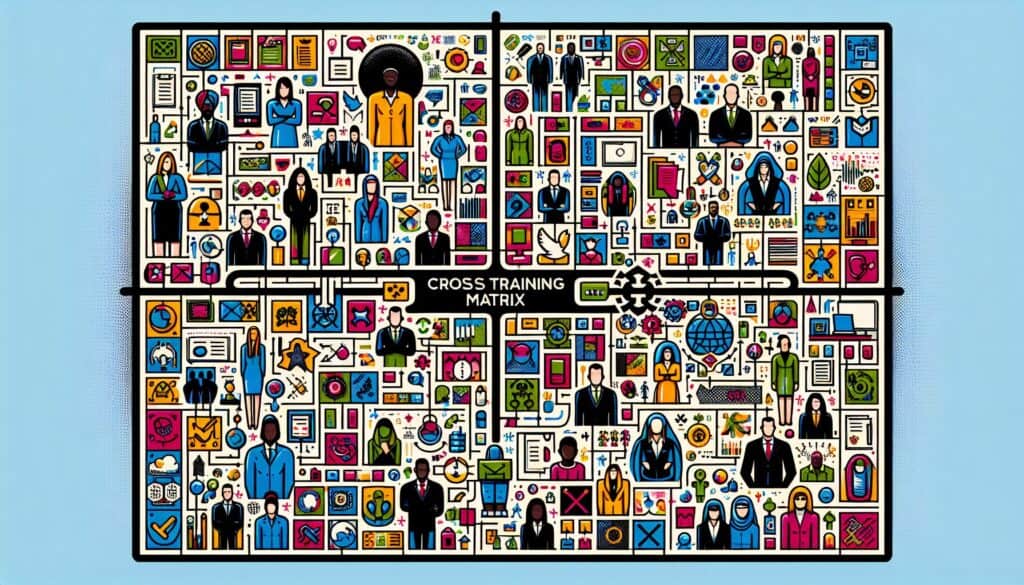直观呈现团队成员在不同任务或能力方面的技能。
- 方法: 工程, 人体工程学
交叉训练矩阵

交叉训练矩阵
- 能力成熟度模型集成(CMMI), 变更管理, 持续改进, 精益制造, 项目管理, 质量管理, 训练
目标
如何使用
- 列出团队成员和流程或部门所需技能或任务的网格。它使用符号或评级来表示每个成员对每项技能的熟练程度。
优点
- Identifies skill gaps and training needs; Facilitates better workforce planning and flexibility; Supports employee development; Improves team 多功能性 and reduces dependency on single individuals.
缺点
- 创建和维护可能很耗时,尤其是对大型团队或动态技能组合而言;如果没有明确的标准,评估技能水平时会有主观性;如果不进行沟通和建设性地使用,可能会引起员工的焦虑。
类别
- 人力资源, 制造业, 项目管理
最适合:
- 管理和发展团队技能,确保业务灵活性,并确定培训需求。
The Cross Training Matrix is often utilized across diverse industries such as manufacturing, software development, healthcare, and project management, facilitating efficient allocation of roles during various phases of product development and operational processes. This methodology is beneficial in environments where collaboration is vital, allowing teams to assess not just current skills but also potential skill sets that can enhance team performance. For example, a software development team may employ the matrix to identify which developers can assist in quality assurance or customer service, ensuring that the team maintains momentum even in the absence of specific members. Typical participants in this process include team leads, project managers, and 人力资源 personnel, who collectively identify key skills necessary for project success and evaluate team members against these requirements. The identification of proficiency levels prompts targeted training initiatives, enhancing skill diversity and ensuring that employees are well-equipped to handle various tasks, thereby reducing reliance on any single team member. In practice, this methodology can be particularly advantageous when launching new products or scaling operations, as it allows for a more adaptable workforce capable of responding to changing demands in the market. Through the assessment of skill gaps and ongoing training strategies, organizations can more effectively plan for future staffing needs while simultaneously promoting individual career development, leading to greater job satisfaction and retention.
该方法的关键步骤
- Identify the required skills and tasks for each role in the team.
- Assess each team member's current proficiency in the identified skills.
- Populate the Cross Training Matrix with proficiency ratings or symbols for each member.
- Analyze the matrix to identify skill gaps within the team.
- Develop targeted training plans for individuals based on identified gaps.
- Implement training programs and monitor progress regularly.
- Review and update the matrix periodically to reflect changes in skills and team composition.
- Encourage cross-training among team members to enhance versatility.
专业提示
- Regularly update the matrix with performance reviews to reflect skill progression and newfound competencies.
- Incorporate feedback loops to ensure team members understand their strengths and areas for growth within the matrix framework.
- Utilize the matrix to identify potential leaders by tracking skill diversification and collaboration patterns among team members.
历史背景
1949
1950
1950
1960
1960
1960
1960
1940
1950
1950
1958
1960
1960
1960
1960
(如果日期不详或不相关,例如 "流体力学",则对其显著出现的时间作了四舍五入的估计)。















相关文章
肌肉骨骼不适调查表
多变量测试(MVT)
多元回归分析
动作捕捉系统
MoSCoW 方法
情绪中值测试